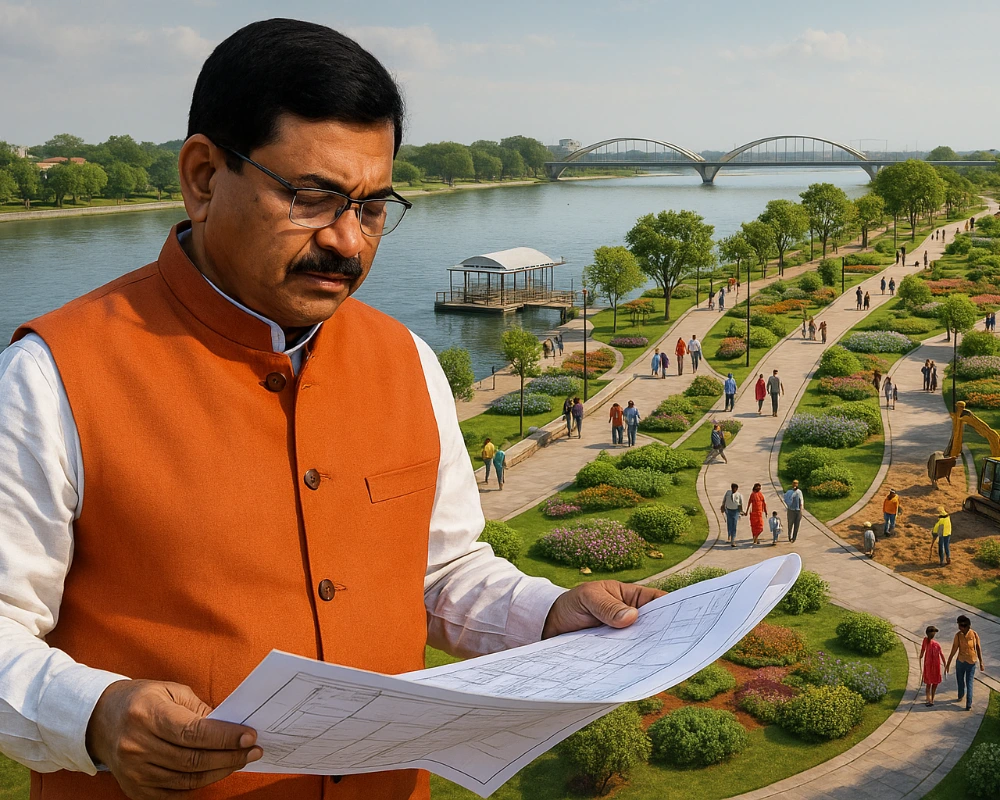CM Majhi approves ₹80 Cr phase of ₹240 Cr Mahanadi riverfront project in Bhubaneswar to boost eco-tourism, real estate, jobs, and sustainable urban growth.
 Brajesh Mishra
Brajesh Mishra

On September 11, Odisha Chief Minister Mohan Charan Majhi approved the second phase of the Mahanadi Riverfront Development Project, allocating ₹80 crore for stretches along the Kuakhai and Kushabhadra banks near Pandara, Bhubaneswar. The scheme will run from 2025–26 to 2027–28, fully funded by the state and executed by the Water Resources Department.
The Mahanadi River, one of India’s major east-flowing rivers, is not just a water source but the lifeline of Odisha’s history and culture. For centuries, its banks have nourished agriculture, supported ancient trade routes, and hosted cultural rituals. Festivals like Boita Bandana, which celebrates Odisha’s maritime legacy, are tied to rivers such as the Mahanadi and its distributaries.
Ecologically, the river plays a vital role in flood control, groundwater recharge, and sustaining wetlands. With Bhubaneswar expanding as a smart city, revitalizing the riverfront is being seen as both a heritage preservation measure and an urban resilience strategy to balance ecology with infrastructure growth.
The first phase of the project (₹160 Cr), executed on the Mandalia–Chaurapur stretch in Sambalpur, has already delivered measurable impact:
Officials see Bhubaneswar’s riverfront development as a chance to replicate — and scale — Sambalpur’s success, but with an added emphasis on eco-tourism and urban amenities.
Experts point out that the Sabarmati Riverfront in Ahmedabad serves as a benchmark for this initiative. Since its completion, the Sabarmati project has drawn over 15 million visitors annually, hosting cultural festivals, adventure sports, and international conferences.
If Bhubaneswar can achieve even 25–30% of that tourist inflow, the Kuakhai–Kushabhadra riverfront could attract 3–5 million visitors annually within the first five years. This translates into significant economic opportunities in hospitality, transport, entertainment, and local artisanal markets.
Business groups in Odisha are particularly keen on PPP-driven ventures like water-sports hubs, herbal parks, and floating restaurants, which can serve as high-value tourist attractions.
Urban planners note that riverfront development projects typically trigger sharp real-estate appreciation. In Ahmedabad, property prices near Sabarmati jumped 30–40% within five years of the project’s launch.
A similar trend is anticipated for the Kuakhai–Kushabhadra belt, which currently has under-utilized peri-urban land. With new ring roads, bridges, and walkways planned, the area is expected to see:
Local real-estate consultants already predict a 15–25% increase in land values over the project’s timeline (2025–28), with potential long-term gains if PPP investments take off.
The Bhubaneswar phase is not just an infrastructure project but a multi-dimensional investment into Odisha’s future — blending heritage, ecology, and modern urban design. By following global models while respecting local culture, Odisha aims to position the Mahanadi riverfront as a cultural and economic landmark, much like the Sabarmati Riverfront for Gujarat.






Sign up for the Daily newsletter to get your biggest stories, handpicked for you each day.
 Trending Now! in last 24hrs
Trending Now! in last 24hrs